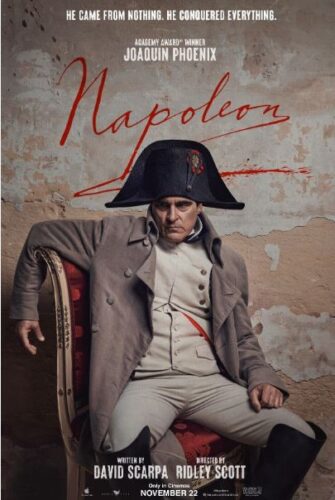Zut alors! A recent viewing of the historical epic Napoleon was enough to give our safety-conscious minds a collective aneurysm. If you haven’t watched it already, well, it’s pretty hard to spoil a film that’s based on actual events – particularly when the ‘real history’ in the film is largely nonsense. Here then are our five standout safety problems in Napoleon: from horse-exploding cannonballs to some very shortsighted battle tactics.
Non-canonical
Towards the start of Napoleon’s journey, the upstart general leads an ambush on the British blockade at Toulon. Commandeering the British troops’ cannons, the French fire on the British ships moored in the harbour. The first shot blasts through the mast of a ship, immediately setting it on fire. The centrepiece of the sequence is a volley of cannonballs that blast through the middle of a large warship, which then immediately explodes.
Being made of metal, it clearly wasn’t the cannonball that caused either of these, so whichever British sailor lit a match in those ships full of gunpowder at the exact moment they were shot needs a stern talking to, if they’re still alive. The person who chose self-combusting masts should also take a look at the new regulations on fire safety information management; a British Standards course would do them good.
Safety rating: 3/10
On thin ice
A pivotal scene in both the movie and the real story of Napoleon is the Battle of Austerlitz. Considered to be one of his greatest triumphs, the film depicts the battle as hinging on a ploy where the French bait the Austrian and Russian coalition into attacking a French camp, only to ambush them from both sides. The battle ends with the troops fleeing across an iced-over lake, which the French troops then shoot cannons into, sending their enemies plunging down.
Given that Austerlitz was part of the Austrian Empire, we can’t help but think that the Austrian forces at least should have been aware of the local terrain. We could harp on about fragile surface rules and fall arrest systems here, but it’s generally just a better idea not to charge a battalion across an icy lake – particularly laden with 19th century rifles, and particularly when your enemies have artillery.
Safety rating: 4/10
Hold the door
After returning early from his war in Egypt – driven primarily by salacious stories about his wife – Napoleon finds France in crisis. He’s soon drafted into a plot to overthrow the ruling Directory, and replace it with a new Consulate, with himself as the First Consul. Having forced the leaders of the Directory to resign (or simply arrested them), Napoleon and his allies declare their intentions to the legislative chamber, and are promptly chased out by a rioting crowd.
Aside from the obvious issues of crowd control, Napoleon barely escapes through a back door, which various legislators then try to force their hands and arms through, even as Napoleon and his guards attempt to close it. This posed an unacceptable risk of trapping and crushing injuries, and would have sent the organisers of the coup to the modern equivalent of the guillotine: an HSE court case.
Safety rating: 5/10
Horsing around
The breaking of the Siege at Toulon ends with cannons fired at the British, but it starts with them fired at the French. Launching the assault by blowing up part of the harbour walls in the dead of night, Napoleon leads the initial charge, only to have his horse explode from under him as a cannonball catches it square in the chest. Perturbed, but otherwise unharmed, the general dusts himself off, scales the walls, and does a bit of stabbing.
Charging a horse at a wall of cannons isn’t something the HSE legislates for specifically, but as we all know, safety at work is about accounting for foreseeable risks. The resistance of a horse against a cannonball seems quite foreseeable when the enemy has cannons, making this a failure of planning and work equipment. We also didn’t see anyone securing the ladders as the troops climbed up them – poor form for working at height.
Safety rating: 4/10
Couldn’t escape if I wanted to
The Battle of Waterloo is the climactic set piece of the movie, and of Napoleon’s life in general. Having returned from exile – in an attempt to dethrone Louis XVIII and restore the waning French Empire – the four major powers of Europe banded together to defeat his rebellion. The end of his hundred-day return was the Battle of Waterloo, where forces led by the Duke of Wellington narrowly defeated Napoleon’s army, who abdicated four days later.
One of the most memorable moments in the battle comes when Wellington orders a sniper not to shoot Napoleon, who has his head lined up prior to the battle. This commentary on the age of chivalry in combat and the thousands of unnecessary losses it may have led to pales in comparison to the lack of hardhats, which would surely have rendered any such discussion moot.
Safety rating: 1/10

